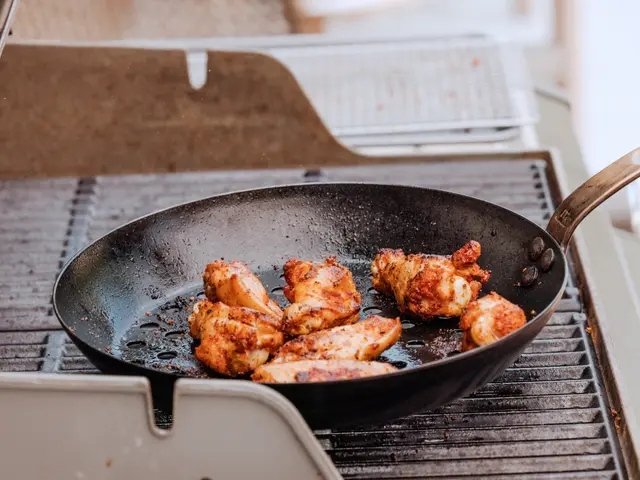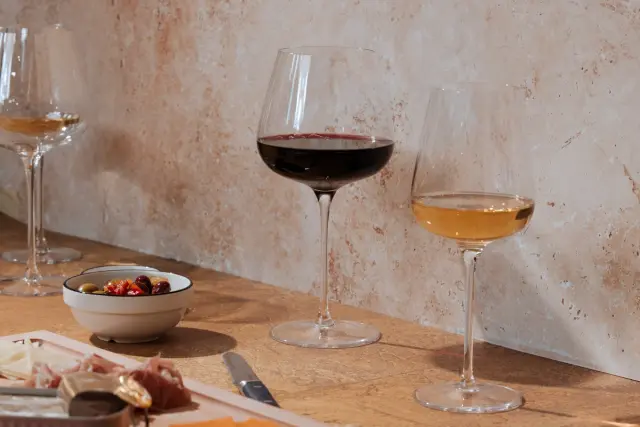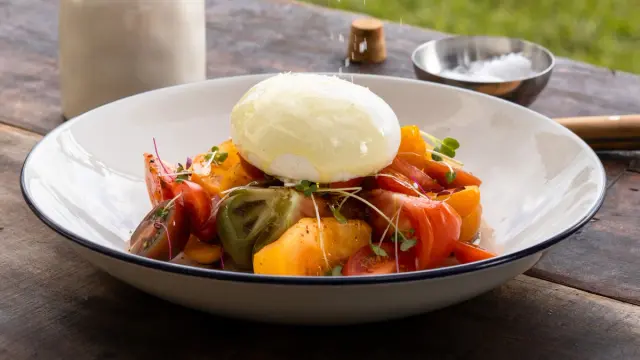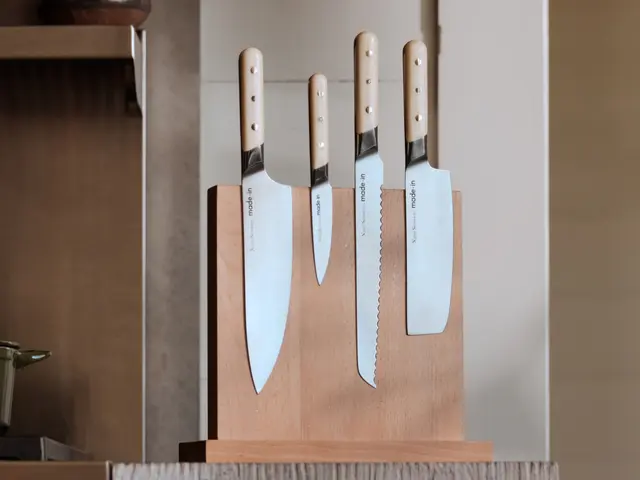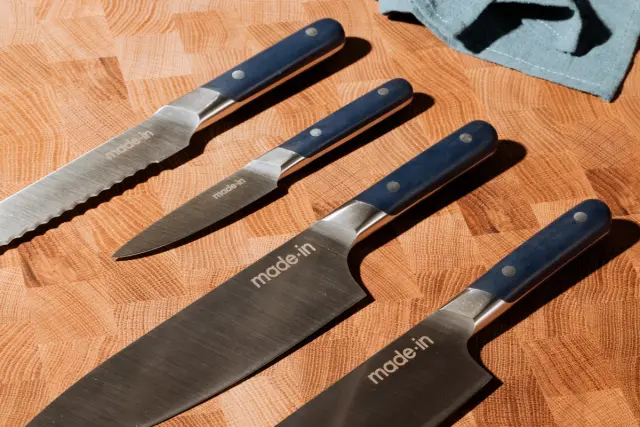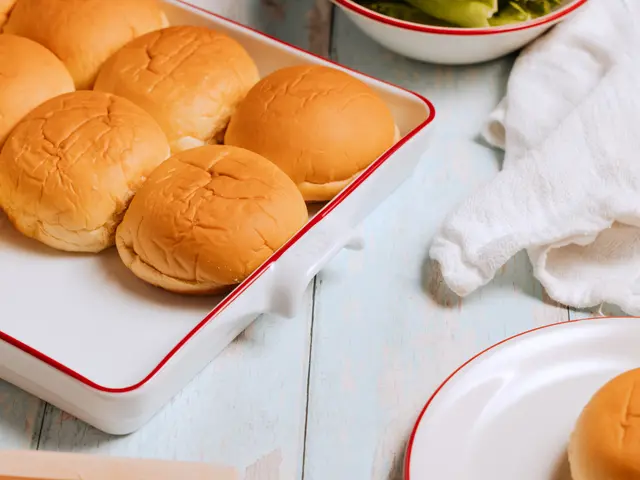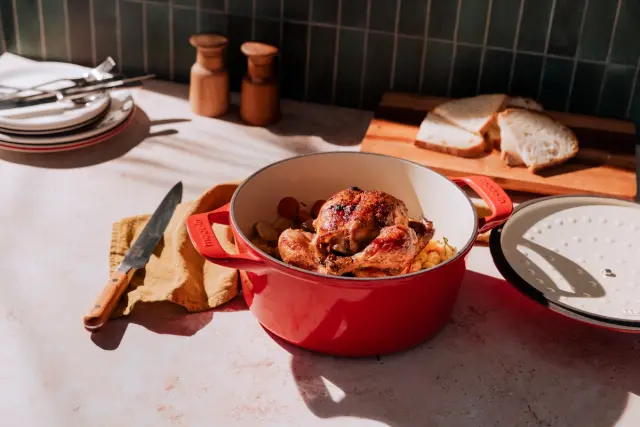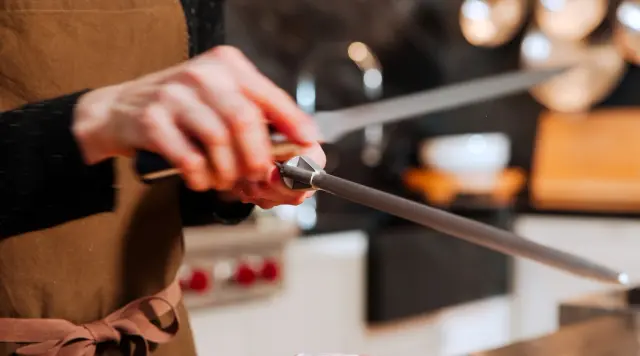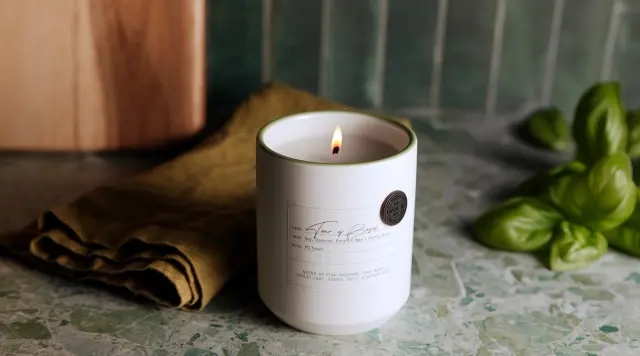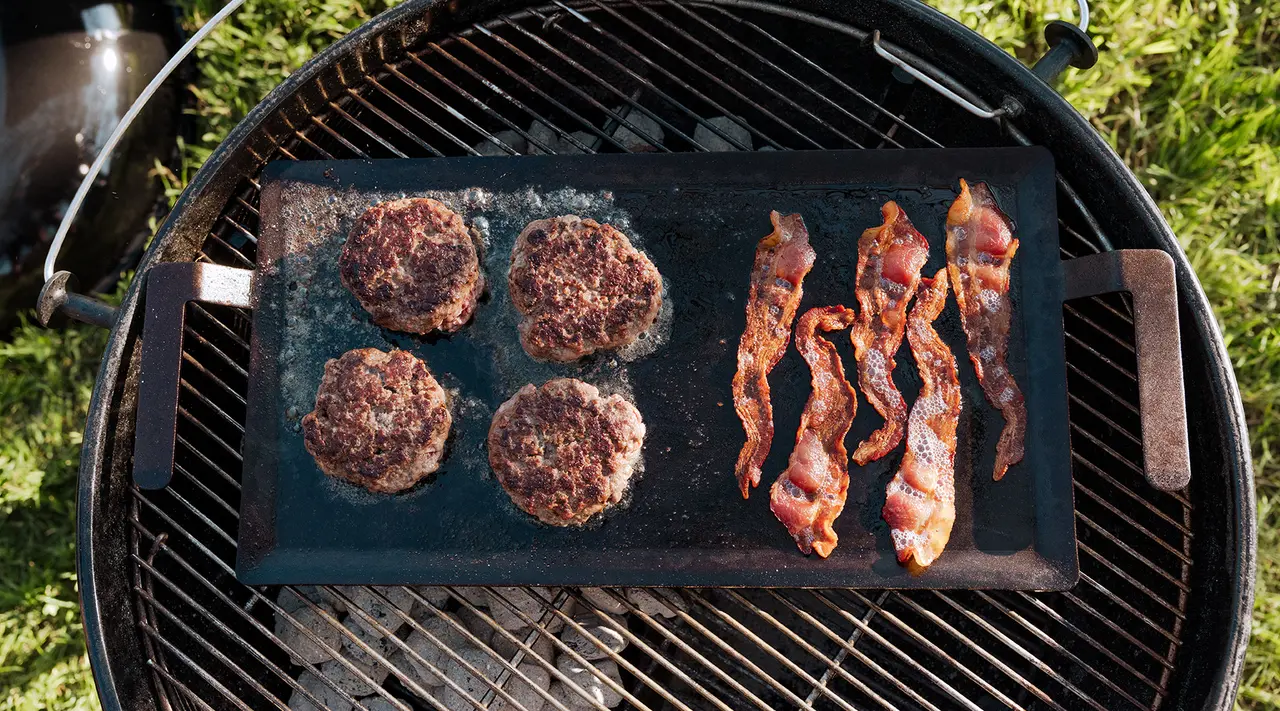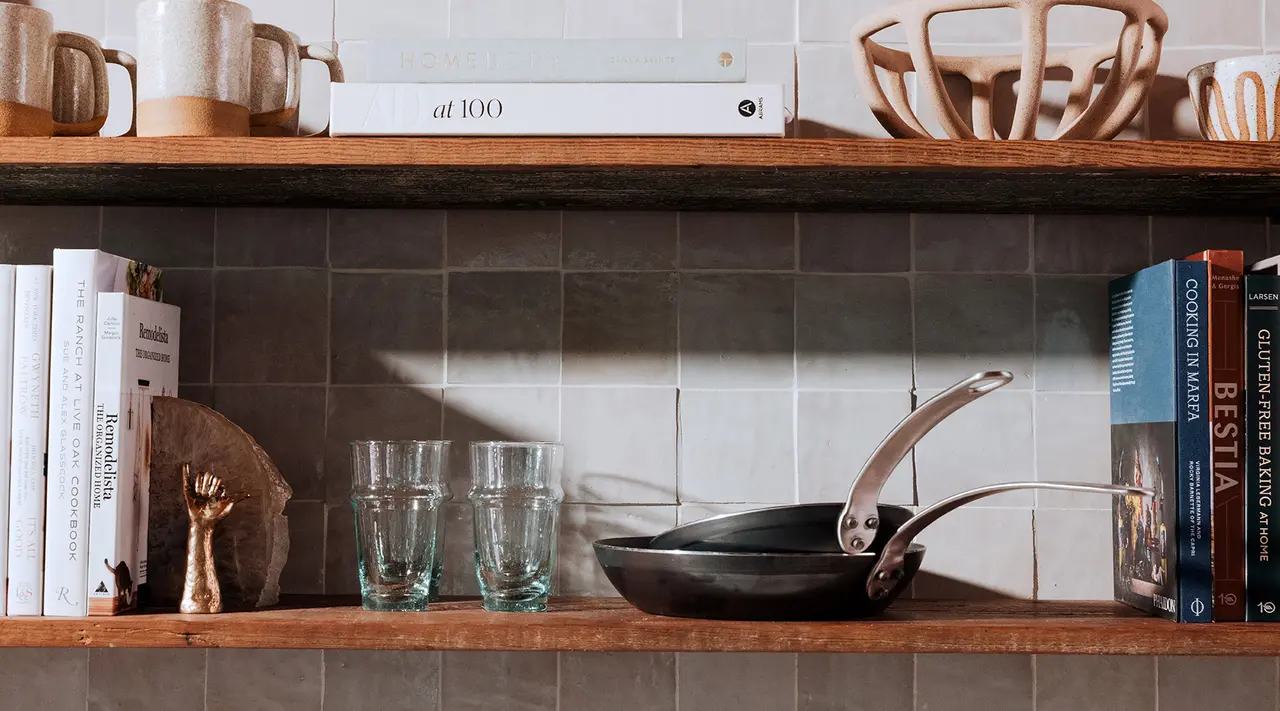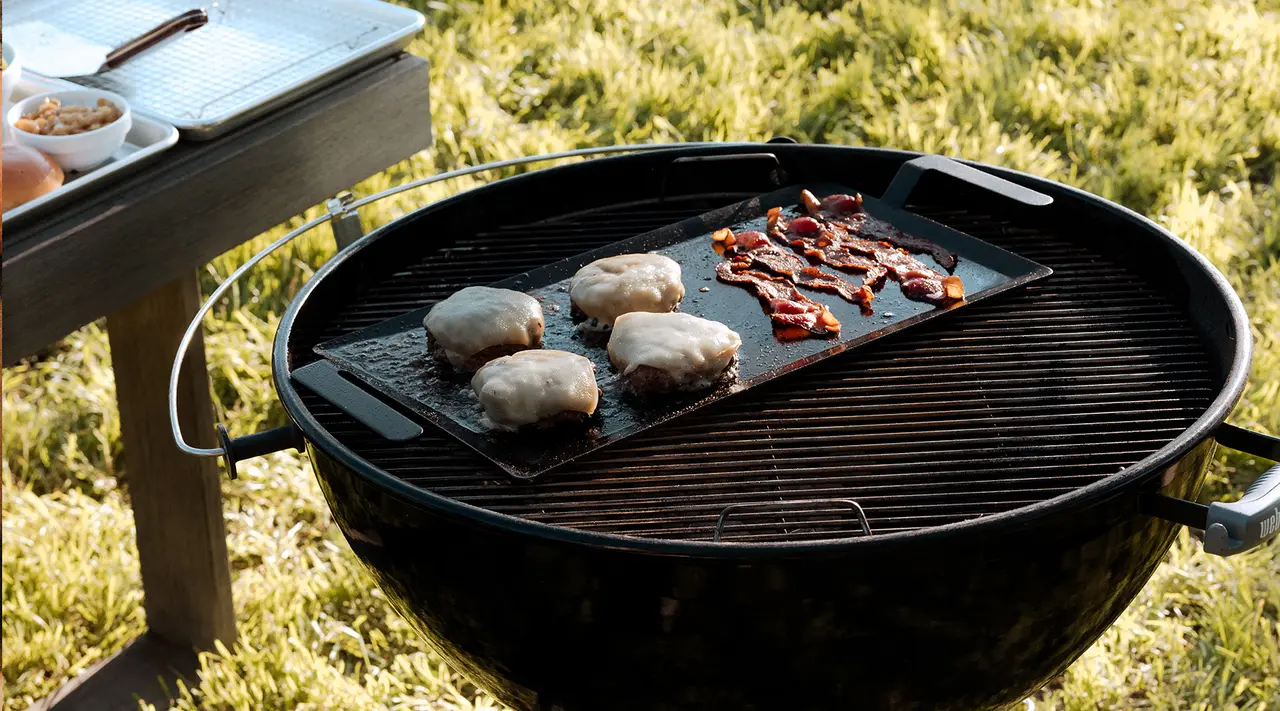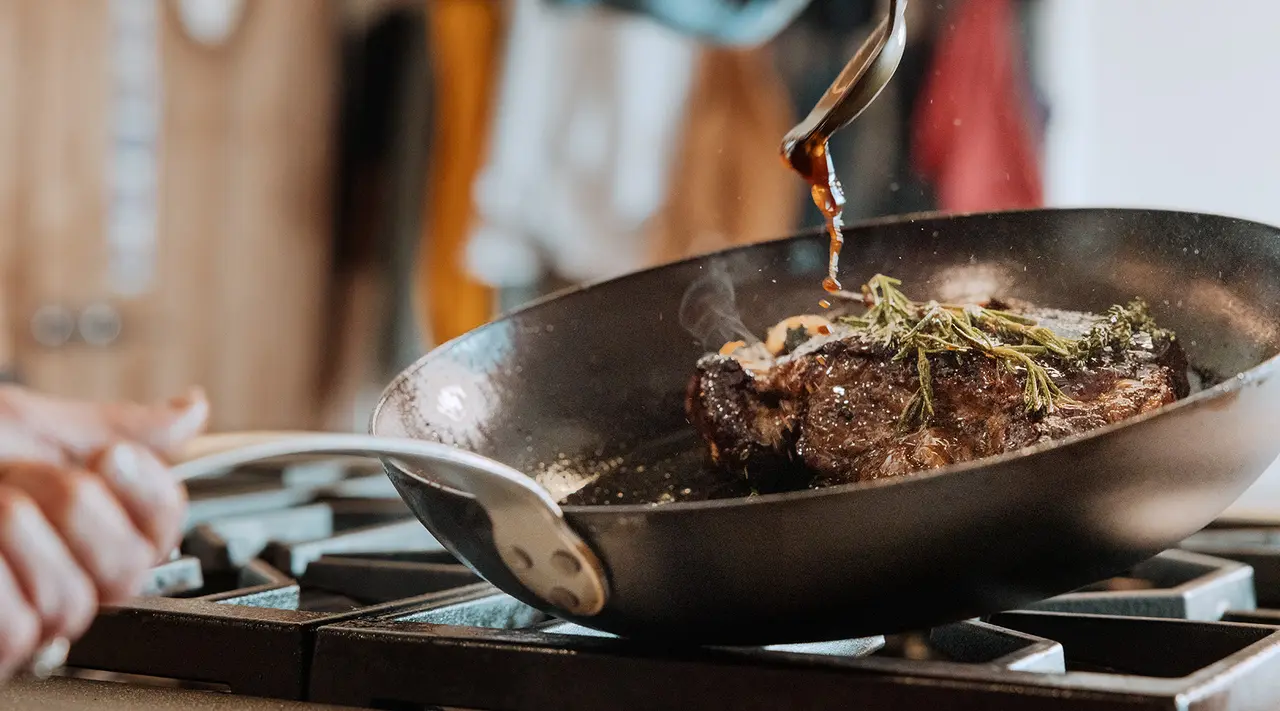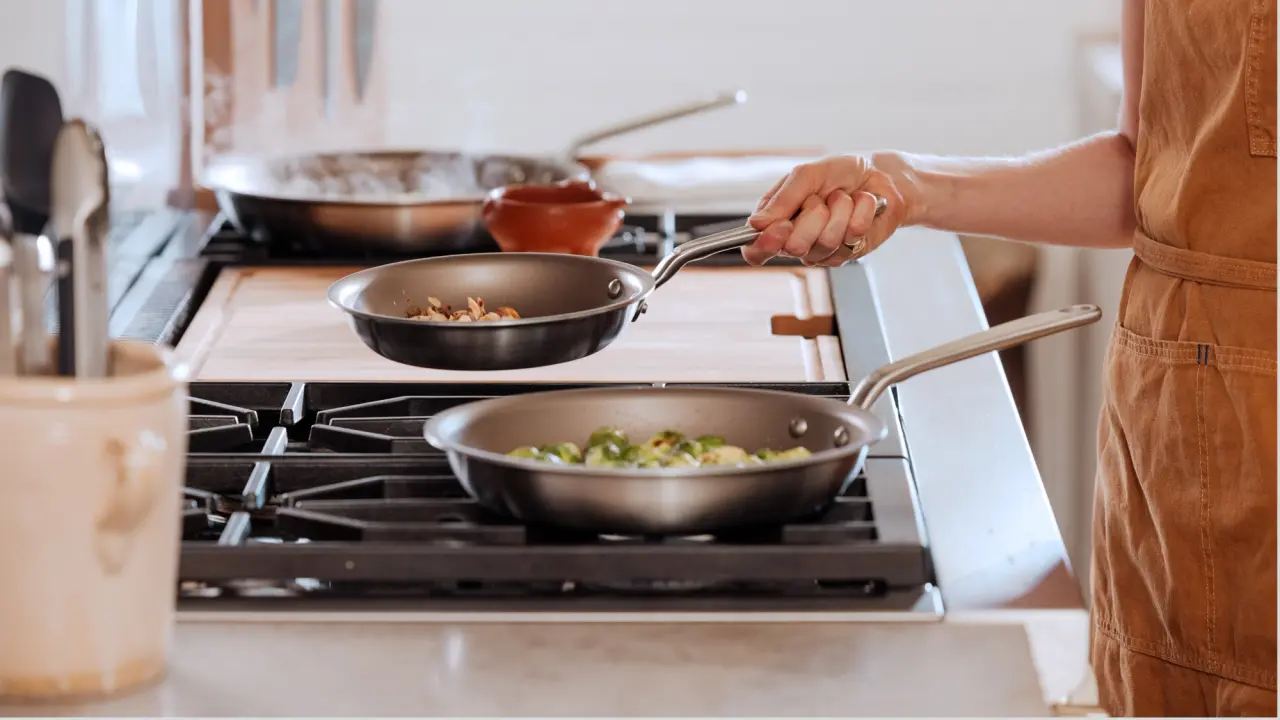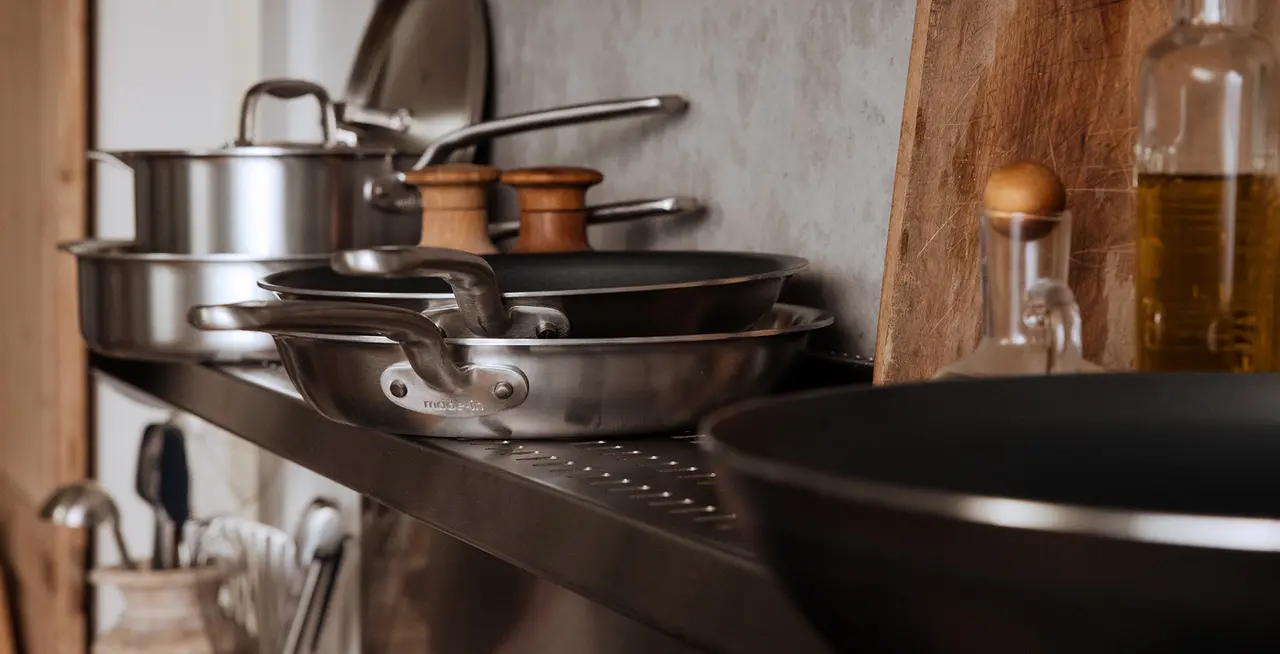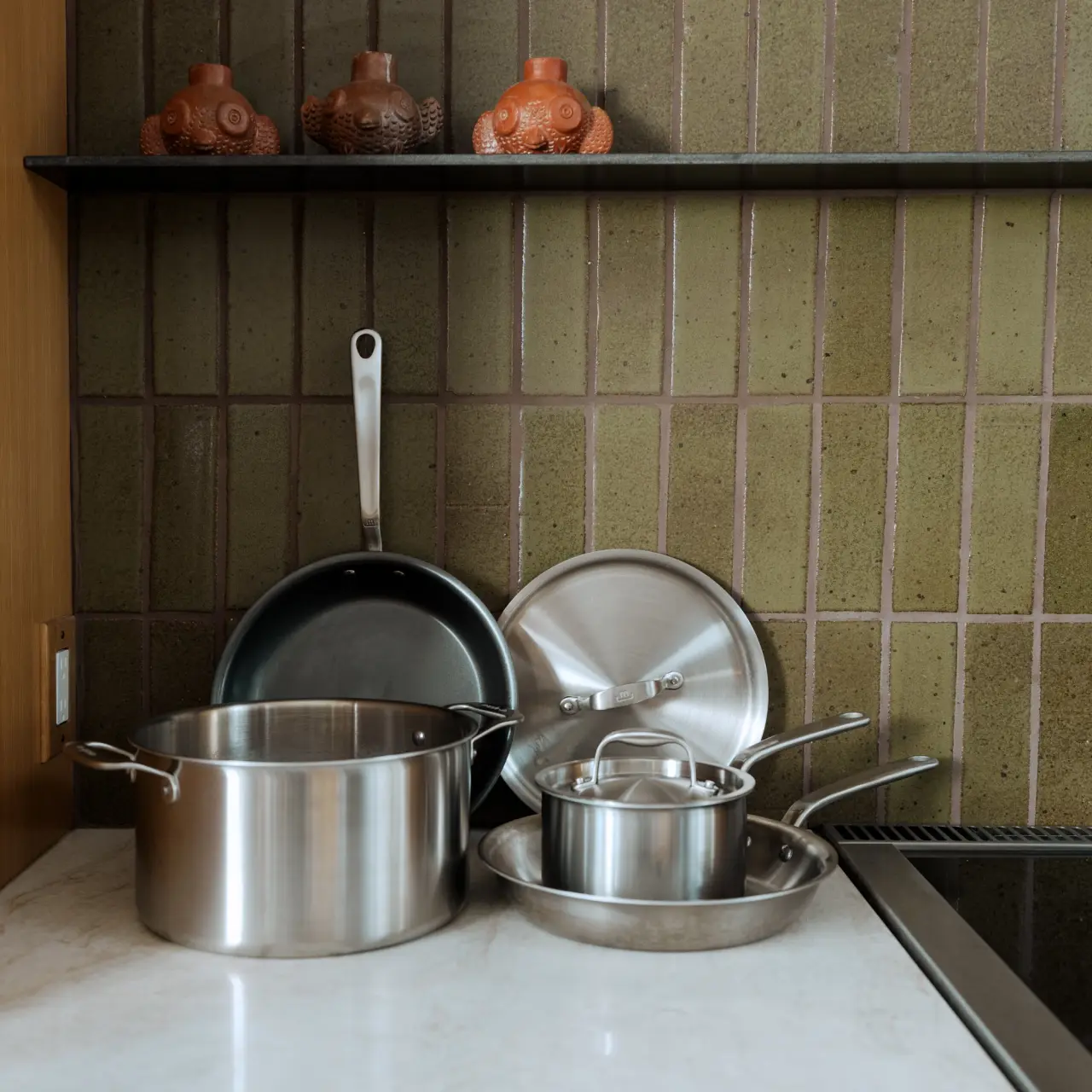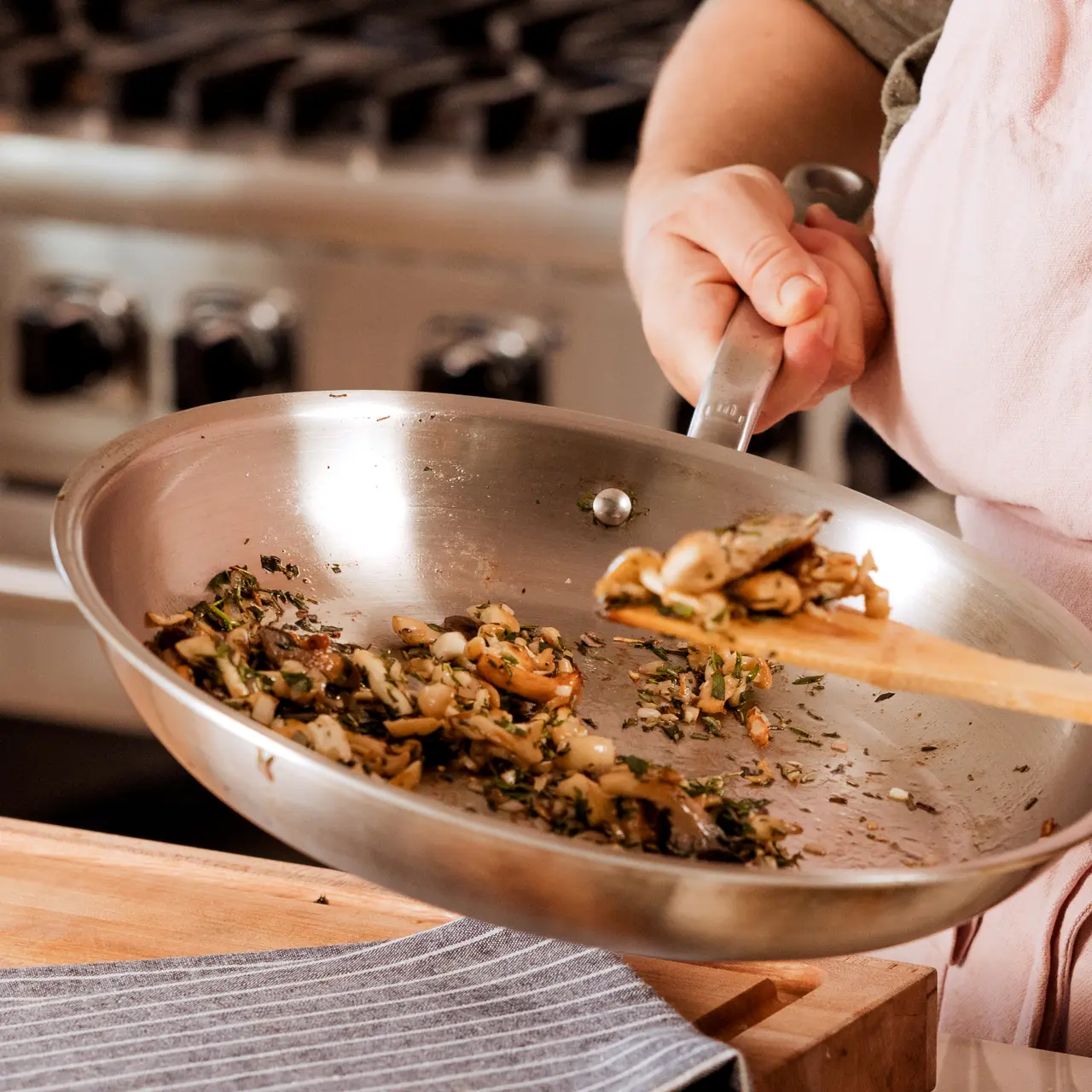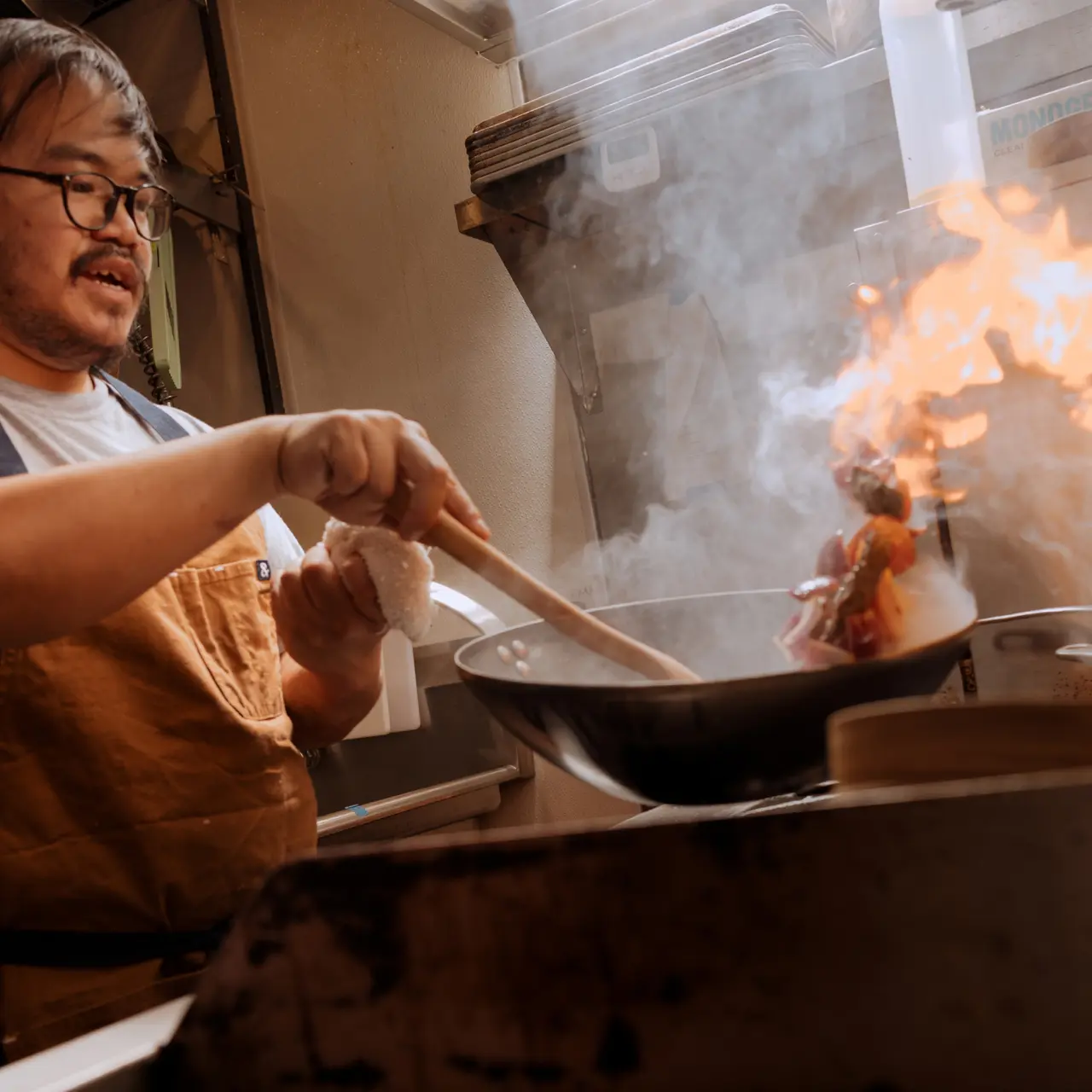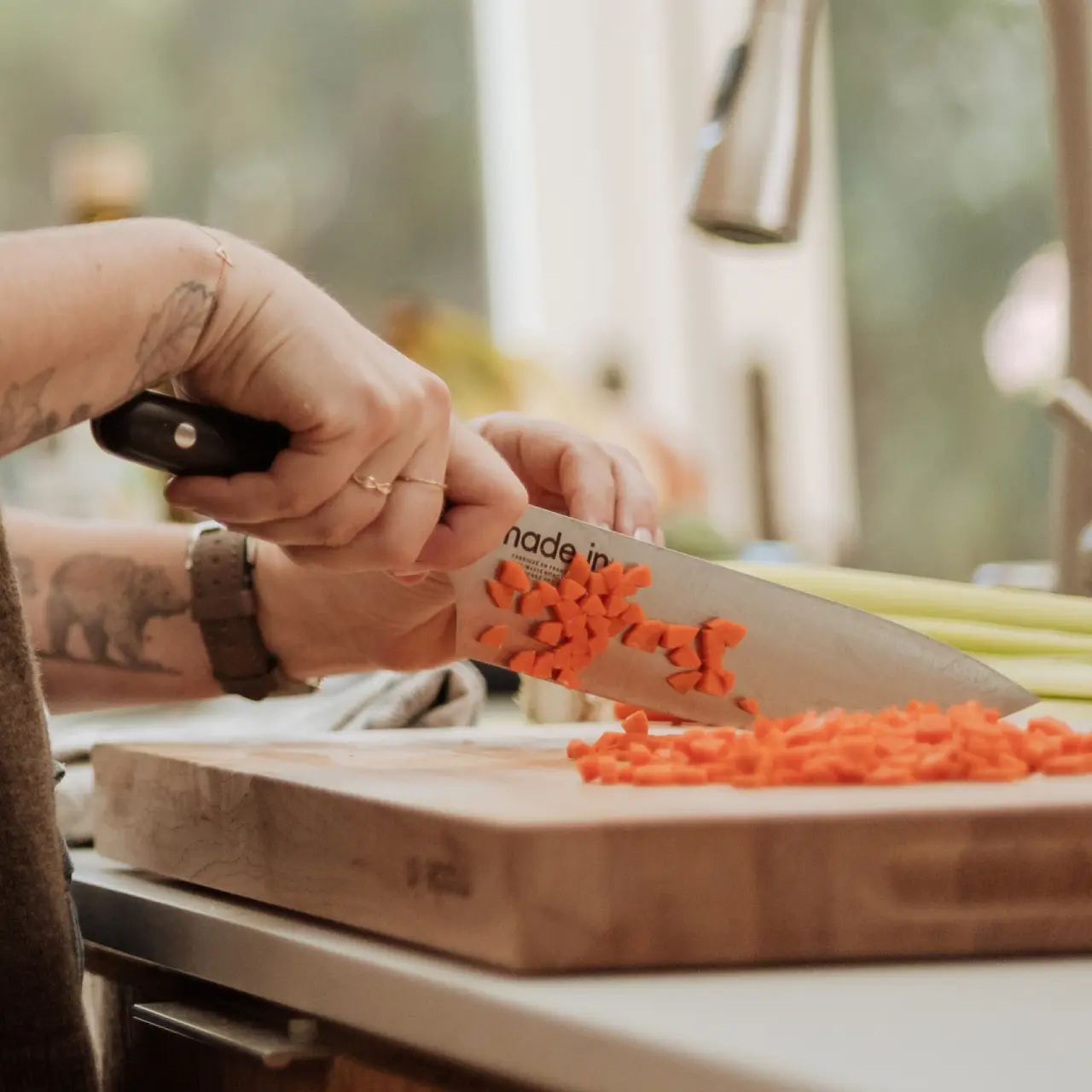A chef knife plays a key role in your day-to-day cooking experience. Think about how a runner’s shoes can enhance (or impair) their performance: the same goes for a knife. A good, sharp, well-balanced knife makes everything—from mincing garlic to butchering meat—easier, safer, and more enjoyable.
But what actually makes a knife “good”? Moreover, how are you supposed to make sense of all the conflicting information out there? We get into all of that: you’ll learn about common knife materials like carbon steel and stainless steel; the difference between Japanese and western-style knives; why full tang is worth the extra cost, and much more.
Understanding the Anatomy of a Chef Knife
A chef knife can be broken down into three main parts: the blade, the handle, and the tang. Here’s what you need to know about each of these.
Blade
The blade—i.e. the sharpened metal portion of your knife—is the first thing you should pay attention to. Most blades are made up of some kind of steel, with varying ratios of carbon and other elements like chromium and cobalt. As a rule, blades with a higher carbon content will be harder and more brittle, whereas those with a lower carbon content are often softer but tougher (i.e., less edge retention, but also less liable to break or chip).
Across the spectrum of kitchen knives, you’ll find a huge array of different lengths, shapes, and styles: whereas a cleaver or nakiri will have a flattened edge, for example, a western-style chef’s knife will feature a more rounded edge. This impacts how you use the knife, and whether it’s best suited to rock-chopping or up-and-down chopping. You won’t need to worry about serrated vs straight edge in this particular case—serrated blades usually feature in utility knives or bread knives, rather than in chef knives.
Blade Length
As far as blade length, a good middle ground is around 7”. This gives you enough weight and heft to cut through things like vegetables and proteins, but without feeling clunky or unwieldy in the hand. If you have especially large or small hands, however, you might want to try a longer or shorter blade—you can find chef knives as short as 6”, and those measuring upwards of 10”.
Handle
Once you’ve figured out the type of blade you want, it’s time to think about the handle. You’ll often hear chefs and food writers say that a knife should feel like an extension of your hand: while a bit cliche-sounding, it’s absolutely true. The handle of your knife should feel comfortable, grippy, and allow you to hold it for long periods of time without your hand cramping. We’ll talk a bit more about this later on.
Tang
At first glance, a chef knife appears to be made of two parts—the handle and the blade—welded together. Yet while some knives are actually constructed from two disparate pieces, others are made using a single long rod of metal, part of which is flattened into the shape of a blade.
The latter are called full tang knives, and they tend to offer greater balance and durability than partial tang ones. The tang—the portion of metal that runs from the bottom of the blade all the way through to the butt, or end, of the handle—distributes the knife’s weight more evenly, rather than concentrating it in the blade.
Blade Construction and Quality
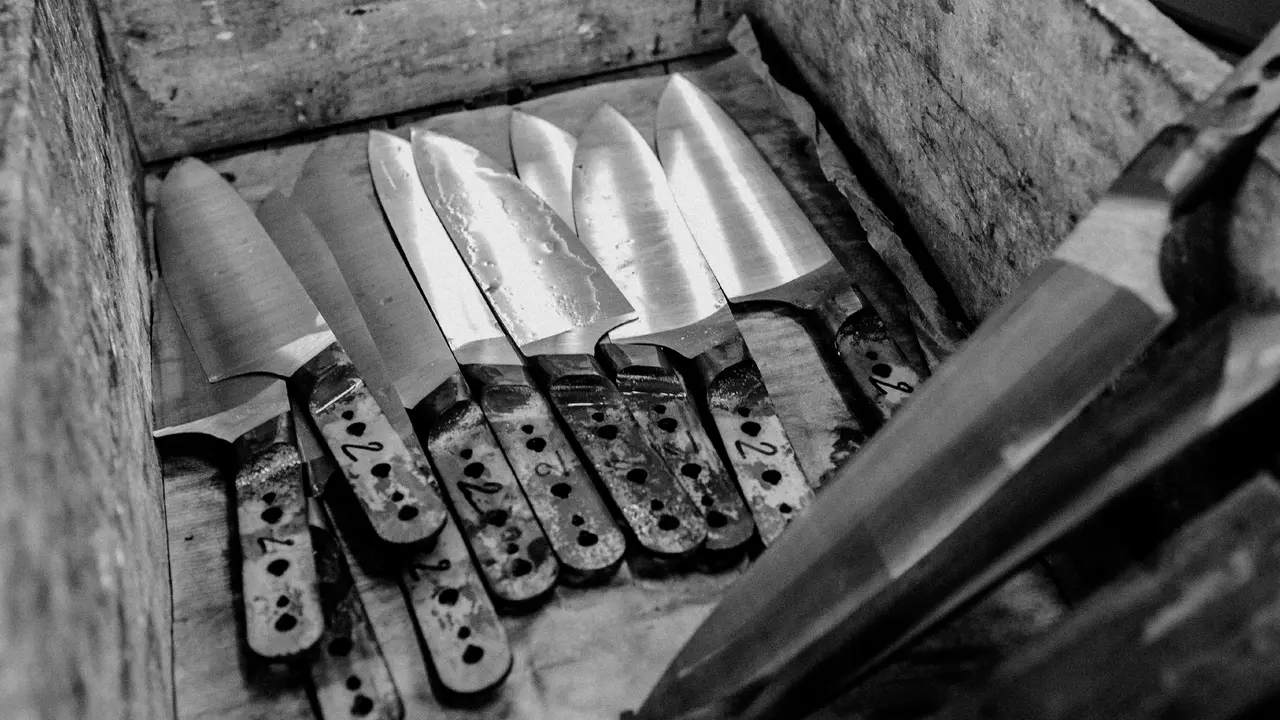
From thickness to edge retention, it’s time to get into the nitty-gritty of blade construction.
Blade Sharpness
Working with a dull knife is a bit like trying to ride a bike through mud: it’ll work, but it’ll be unnecessarily cumbersome, difficult, and possibly even dangerous. A freshly sharpened knife cuts cleanly and precisely, without ruining the texture of whatever protein or vegetable you’re cutting. We’ll talk more about this in the section on edge retention.
Blade Thickness
Hold a European-made chef knife up to a Japanese gyuto, and you’ll notice a couple of things: the Japanese knife will probably be lighter than the European one, for starters, and the blade will also be noticeably thinner with a narrower, more refined edge.
The relative thinness of a Japanese blade (combined with the hardness of the steel) makes for a sharper and more precise cutting edge—as well as a more delicate knife overall. This is either a pro or a con, depending on the job: we wouldn’t use a Japanese gyuto for heavy cutting tasks like butchering a large bone-in cut of meat, or carving up a hard winter squash. Rather, these are tasks for thicker, heavier-duty knives—like the cleaver—which are less liable to chip or break.
On the other hand, we would much prefer to use a thinner, more delicate knife for jobs that require more precision and control; like slicing raw fish for sashimi, chiffonading fresh herbs, or creating garnishes. You can even use a single bevel knife for tasks like this, if you want to get really fancy.
Edge Retention
While the sharpness of your blade depends partly on how often you, well, sharpen it (or how recently you purchased it), the truth is that certain blades can get much sharper than others. Japanese knives, for example, are traditionally made of a high-carbon steel, making it easier to create a very thin, sharp edge. That edge will also hold longer than with softer metals, such as stainless steel, so you won’t need to sharpen these blades as frequently.
That’s not to say we don’t love stainless steel knives—just be aware that you may need to sharpen them more frequently. The plus side, however, is that they take to honing much better than high-carbon metals.
Balance and Comfort
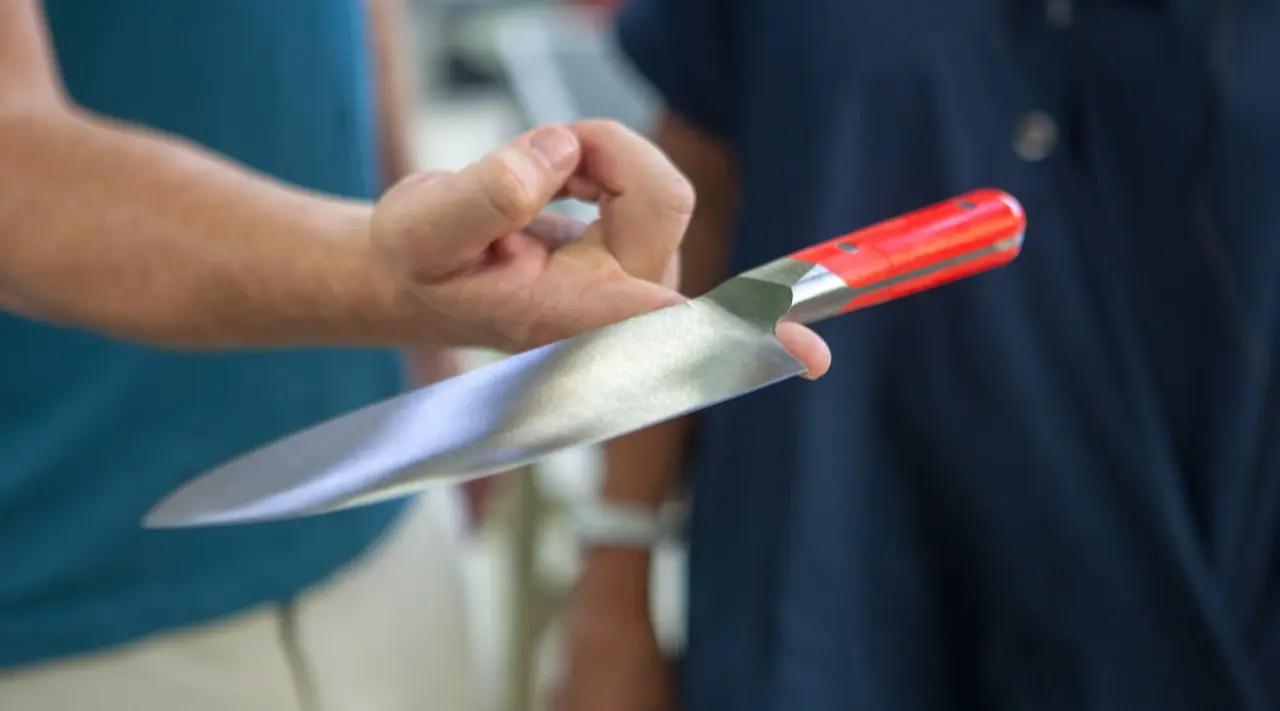
A chef knife might get excellent reviews across the board, but if it doesn’t feel right when you hold it, it’s not the knife for you. When testing out a new knife, pay attention to these two key areas.
Weight Distribution
Chef knives are generally either slightly more blade-heavy or more handle-heavy, meaning that more of the weight is concentrated toward either the blade or the handle, respectively. However, a good chef knife won’t feel imbalanced when you cut with it, and should feel stable and easy to wield: an overly handle-heavy knife, for example, can cause hand and wrist fatigue over time. Full tang knives tend to have a more even weight distribution, which is one of the main reasons we prefer them over partial tang or no tang knives.
Handle Design
If your hand cramps up or your grip feels awkward and clumsy when you hold a knife, that probably has to do with either the shape of the handle, what type of material the handle is made from, or both. We prefer a high-quality plastic or wooden handle, both of which are relatively lightweight and offer excellent grip.
One of our favorites in particular is POM, a type of plastic commonly used in knife handles (and which we use to construct all of our non-wood handles), as POM is more comfortable to hold than conventional plastic handles. As an added bonus, they’re also extremely easy to keep clean.
Versatility and Suitability for Different Tasks
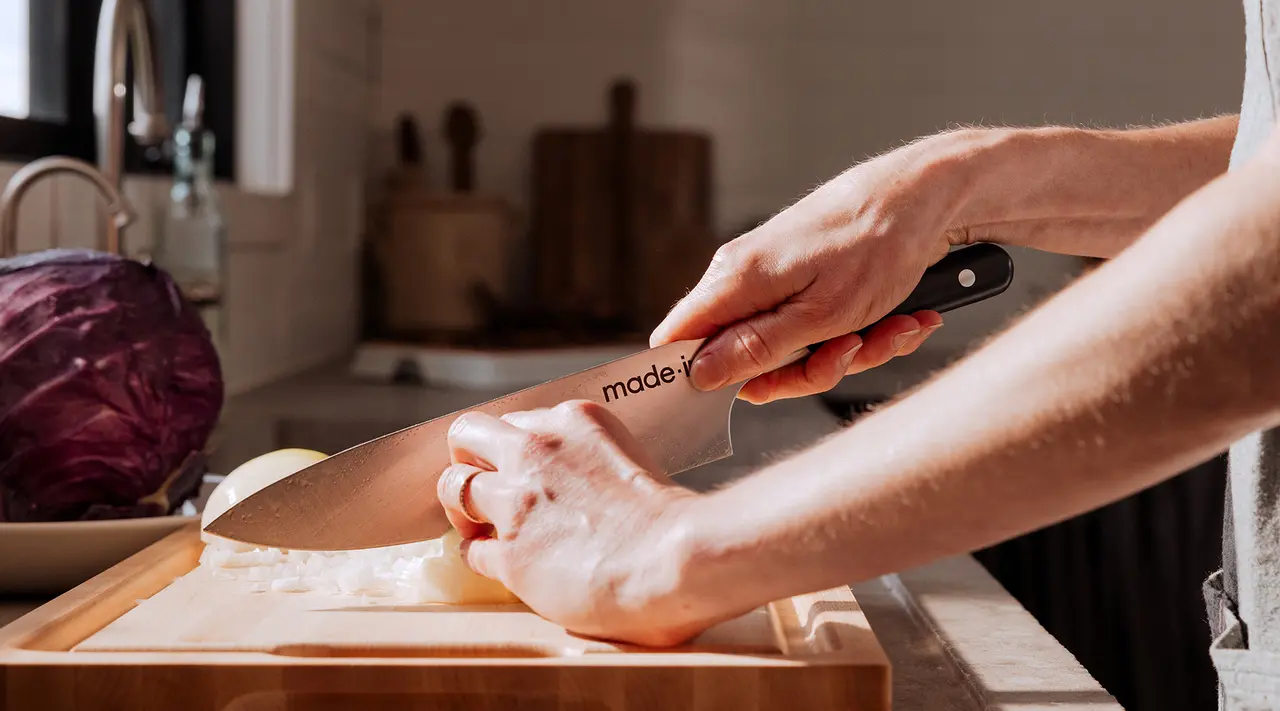
Before you take the plunge, make sure your new chef knife can pull its weight in the kitchen.
Multi-purpose Use
A chef knife’s versatility is arguably its biggest selling point. It doesn’t need to excel at every single task—but it should definitely be able to handle a wide variety of cutting tasks with ease. Your knife should be heavy enough to tackle jobs like butchering poultry and fish, yet nimble enough for delicate, precise knife work like julienning and mincing fresh herbs.
Task-specific Considerations
Like we mentioned up top, a chef knife should excel at a wide range of tasks—but the fact is, a chef knife will never do quite as well at breaking down a whole branzino or Dover sole as a fillet knife, nor will it flute a porcini mushroom as well as a bird’s beak knife.
While you don’t need to kit out your knife collection with a ton of different specialty blades, we definitely recommend supplementing your chef knife with options like a serrated knife, a paring and/or utility knife, and—depending on your cooking habits—something more task-specific, like the above mentioned fillet or bird’s beak knives.
Durability and Maintenance

Your chef knife should stick around for a decades, not months. Here’s how different knife styles stack up in terms of their durability, as well as how easy they are to care for.
Material Durability
Your knife’s hardiness mostly comes down to the raw materials it's made from. Depending on the percentage of elements like carbon or chromium used to make the blade, your knife might be relatively stain- and rust-resistant, or not: high-carbon knives (e.g. most Japanese knives) rust and stain much more easily than stainless steel knives, which contain less carbon but a high percentage of chromium. You’ll also need to consider the relative brittleness of high-carbon or carbon steel knives compared to stainless steel, as well as whether your blade is full tang and fully forged or not.
All of this doesn’t make one knife style objectively better or worse than the other. As we’ll get into next, much of it depends on how much upkeep you’re willing to do to keep your knife in good shape.
Ease of Maintenance
Generally speaking, you’ll get as much out of your knife as you put into it. A well cared-for knife—one that’s washed by hand, stored properly, and regularly honed or sharpened—will pretty much always perform better than a knife that’s been knocked around or shoved in a drawer.
You should also consider how much maintenance a particular knife will require before you buy it. For example, since carbon steel is more prone to staining and rusting than other metals, you’ll need to be extra careful to wash and dry it after every single use. If this doesn’t sound like something you want to be responsible for, then a less high-maintenance knife is probably more your speed.
Budget Considerations

A good chef knife isn’t cheap—but it doesn’t have to be super pricey, either. You can find plenty of well-made, nice-looking chef knives for around $100 or even less. At the end of the day, all that really matters is that it feels comfortable to use and works with your particular cooking style. Of course, we definitely recommend investing in a full tang, fully forged knife if you can, which will both perform better and last longer than a stamped and/or partial tang knife.
Ready to Shop?
Doing your homework before buying a chef knife may seem a bit extra, but anything that makes you a savvy, well-informed home cook who cares about what they’re buying is, in our opinion, well worth some additional time.
Whether you use it for deboning a chicken or slicing up a homemade pie, we want you to have a great chef knife that gels with your cooking habits, fits your budget, and looks great in your knife block.
